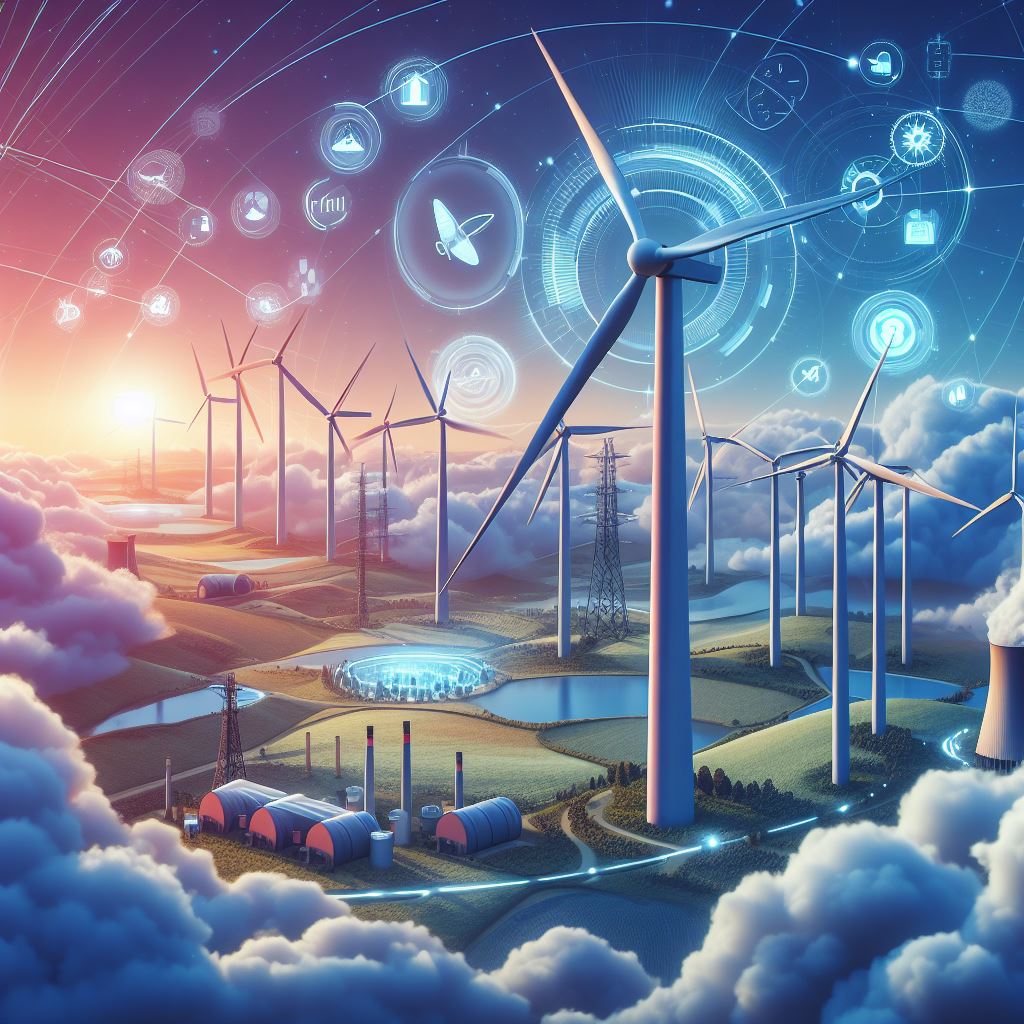
For decades, we’ve sought to answer this question by perfecting the art and science of turbine technology. The relentless pursuit of innovation continues to redefine our limits, leading us to the precipice of the next frontier in renewable energy production. As we confront the dual challenges of growing energy demand and the urgent need to reduce carbon emissions, the development of next-generation turbine technology emerges as a beacon of hope.
Wind as a Source of Sustainable Power
Amidst the pressing concerns of climate change and the urgent demand for cleaner energy, wind power has emerged as a cornerstone of sustainable energy solutions. With the prowess to transform gusts into electricity, wind turbines are instrumental in the global movement towards renewable energy adoption. The evolution of wind turbine technology is a vital element in our quest for a greener planet.
Next-Generation Turbines: A Glimpse into a Brighter Future
As the race to refine renewable energy technologies accelerates, next-generation turbines stand at the forefront of innovation. These modern marvels are redefining what we thought possible, pushing the boundaries of efficiency and capability. The adoption of more sophisticated designs and materials allows these turbines to capture wind energy more effectively than ever before. They are equipped to operate seamlessly across a wider range of wind conditions, from the slightest breeze to gale-force winds, ensuring a steady and reliable power supply.
Manufacturers and researchers are deploying cutting-edge techniques to enhance the features of these turbines. For example, advanced computational models and wind simulation tools enable engineers to optimize each facet of turbine design for maximal airflow and energy production. Additionally, improvements in blade manufacturing have led to lighter, yet stronger turbine blades that increase output while reducing mechanical stress on the system.
Efficiency at the Heart of Innovation
Efficiency isn’t just a buzzword when it comes to next-gen wind turbines; it’s the foundational goal driving their development. Enhanced efficiency means drawing more electricity from each gust, significantly boosting the energy return on investment. Innovations such as improved gearbox designs, direct drive systems, and smart control technologies are instruments in this efficiency drive.
One standout advancement is the variable pitch system, which allows the blades of a turbine to adjust their orientation to the wind. This fine-tuning capability ensures that turbines capture the optimal amount of kinetic energy without being overwhelmed by strong gusts. Furthermore, magnetic levitation is a pioneering technology that decreases friction losses by suspending the turbine blades above the ground, eradicating the need for ball bearings and reducing wear and tear.
The combination of these efficiency-centric designs and technologies leads to turbines that not only produce more energy but also reduce operational costs and extend the lifespan of wind farms. As such, the levelized cost of energy — which measures the lifetime costs divided by energy production — continues to drop, making wind power an increasingly competitive alternative to fossil fuels.
Wind Power Innovations: Pushing the Limits
Revolutionary wind power innovations are extend into holistic site management and grid integration. Smart grid technology harnesses the power of data analytics and the Internet of Things (IoT) to create an energy network that is responsive and adaptive. These systems anticipate fluctuations in wind power output and compensate accordingly, either by adjusting supply from other renewable sources or by storing excess energy for later use.
Offshore wind farms are setting the stage for vast expansions in capacity. With less turbulence and stronger, more consistent winds than their onshore counterparts, these turbines can be colossal — dwarfing even the most impressive onshore installations. Offshore turbines must withstand rugged ocean conditions, which has precipitated advancements in materials and construction techniques that ultimately transfer to onshore applications as well.
Moreover, creative solutions like vertical-axis turbines are being developed as alternatives to the traditional three-blade design. These turbines can harness winds from multiple directions without the need to pivot the nacelle, and they show potential for urban and residential use due to their smaller footprint and reduced noise output.
Environmental Benefits of Wind
The environmental benefits of next-gen wind turbines extend beyond the reduction of greenhouse gas emissions. The move to more efficient, higher-capacity turbines means that fewer installations are needed to produce the same amount of energy, leading to reduced land use and habitat disruption. These turbines also integrate more seamlessly into existing landscapes and ecosystems, with initiatives in place to minimize the impact on local wildlife such as birds and bats.
Furthermore, wind turbine technology generally requires less water to operate than traditional energy production methods, contributing to a lower overall environmental footprint. This is critical in regions where water resources are scarce or overstretched by agricultural and domestic demands.
The sustainability of wind turbine technology is starts at the design stage. Developers and engineers are addressing the full life cycle of the turbines, including end-of-life considerations. They’re innovating in recycling old blades and components, ensuring that turbines can be decommissioned responsibly without adding to landfill waste.
Harnessing the Power of Renewable Energy
The transition to renewable energy is integral to ensuring a livable future for the coming generations, and wind power innovations play a significant role in this shift. Next-gen wind turbines, with their increase in efficiency, advanced technology integrations, and reduced environmental impact, offer a clear path forward. Investments in this sector are rather affirmations of a commitment to a sustainable future. As these turbines continue to evolve and improve, they will undoubtedly unlock new potentials in our endeavors to secure an energy-rich, green tomorrow.
